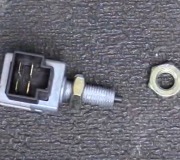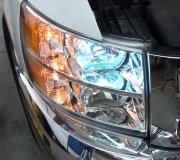There's no '94 Suburbans in the list of unanswered questions so either it didn't get posted or someone answered it but you didn't get the automated e-mail with the link back to that page. You can search by vehicle brand and model to see if your post is listed, then click on it to see if there's a response.
29 - Quad driver module (computer) 4th gear circuit
As you can see, diagnostic fault codes can be not very descriptive. They only indicate the circuit or system that needs further diagnosis, or the unacceptable operating condition. There are entire books that cover just the codes and the test procedures to solve them. GM references "quad drivers" a lot. I only know them as the circuits in the computers that run things. The circuits in other brands of computers work the same way, but they use considerably different terminology. To me, this code implies there's a problem in the computer itself, but I would never suggest you replace it as a test unless you have another one already. The proper procedure is to perform a few electrical tests on that circuit to rule out things like a wire being shorted to ground or cut open. Most of the time there are safeguards built into the computers to protect the driver transistors when a wire or solenoid becomes shorted, so logic would dictate a grounded wire or shorted solenoid would not damage the computer, but you still don't know if the fault code refers to a defect detected inside the computer or if it's referring to an external defect affecting that driver circuit.
You didn't say what kind of problem you're having with the torque converter clutch so I can only tell you how the system is supposed to work. I have to defer to my Chrysler experience but almost all of them work the same way. The engine needs to be almost fully warmed up, and the transmission has to be in the highest gear, and for some 4-speed models, it will operate in third gear. Typically the clutch will disengage near wide-open-throttle because a torque converter automatically allows the engine to develop double the torque as with a manual transmission, but that advantage is defeated when it's locked up, in favor of better fuel mileage. You want that higher torque when pulling a trailer up a steep hill while trying to pass a freight train! It will also unlock when you fully release the accelerator, in preparation for coming to a stop, and presumably to allow the vehicle to coast further with less engine drag. The clutch will unlock if engine temperature gets too high so engine speed will pick up and the water pump, and possibly the radiator fan runs faster. The last thing to cause unlocking is hitting the brakes. The assumption is you'll be coming to a stop.
Two common causes of intermittent unlocking are a glitch in the throttle position sensor's reading, and a misadjusted brake light switch. Intermittent problems with the TPS seem to be more common with diesel engines, but that might be a misconception on my part. There's usually two, and often three separate switches built into the brake light switch so you can't judge its operation by observing the brake lights flickering on and off while driving over bumpy roads. Intermittent cutout of the cruise control is another result of a misadjusted brake light switch.
To identify a misadjusted brake light switch, hold the brake pedal up with your foot. If the intermittent problem stops acting up immediately, suspect the switch adjustment. Next, press the pedal down about 1/4" to 1/2" while driving. If the cruise control kicks out or the torque converter unlocks with that little pedal movement, again, suspect the adjustment.
A different common complaint is engine speed periodically jumps up 200 rpm, then goes back down a couple of seconds later. To verify that is due to the torque converter clutch unlocking, especially when you can only hear it and you don't have a tach. On the dash, hold the accelerator and vehicle speed steady at highway speed, then tap the brake pedal with your left foot. The increase in engine speed should feel the same.
Chrysler developed the first torque converter clutch for their big block engines in 1977 and all of them in 1978. They were strictly hydraulically-controlled through internal valves in the valve body. Today they all work the same way mechanically inside the torque converter, but computer controls switch a solenoid on and off to control fluid flow to the clutch. That provides more precise control over a wide range of variables. I read a lot about people having fault codes related to the solenoids, but for most of those posts that I follow, replacing the solenoid doesn't solve anything, and most of the people don't notice any symptoms. Often they aren't even aware the code is in memory until a different problem sets a code that turns the Check Engine light on. Looking into the new problem reveals the TCC code that has been there a while.
Chrysler had a lot of trouble with their first batch of lockup torque converters. I learned about that because I had one that acted up at 40,000 miles. After those first couple of years it has been extremely rare to have a failure inside the torque converter on any brand of vehicle.
Thursday, October 30th, 2014 AT 12:00 AM



